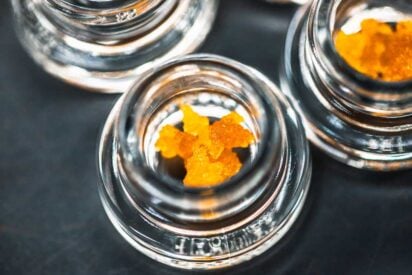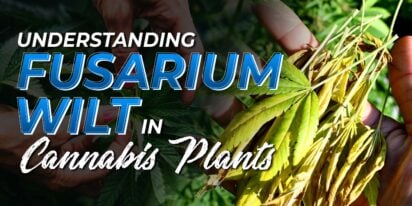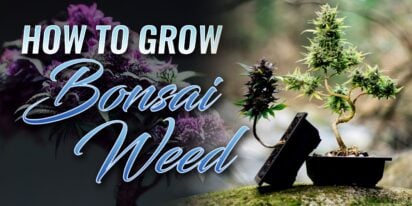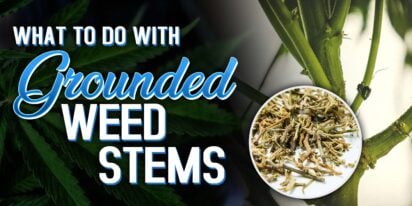
Are You 18 Or Over?
YesOr
No By clicking yes, you certify that you are over 18. By using this website, you agree to our legal disclaimer.605+ Cannabis Strains over 20 Breeders worldwide.
Table of Contents

One of the most potent forms of cannabis concentrates is hash. This goes by different names but to concentrate makers, this is simply known as hash. If you are growing cannabis and you would like to venture into making hash, it’s important to learn how to make one safely and efficiently.
One of the earliest forms of cannabis concentrates is hash or hashish. This term is recognized all over the world as a potent form of cannabis because it is pure and unprocessed. Some hash makers use minimal heat and pressure to manufacture hash but the traditional way still holds till today.
Hash was initially enjoyed in Eastern Asia and is known as the word Charas in Hindi, a word that meant hashish. It is quite easy to harvest and manufacture hashish because all you need to do is to rub the buds between your hands or between any coarse materials like a piece of cloth, to collect the trichomes.
As you rub the buds, the precious trichomes naturally stick to your hands or on cloth. Workers further compress the collected trichomes into tiny balls and this is sold in the market as a potent, unprocessed hash.
Hash was already enjoyed in many areas in Asia but it was only in the 12th century when smoking it became popular. Smoking hash became quite a sensation especially in the different regions in the Middle East that different tools were invented just to enjoy its smoke.
The popularity of smoking hashish led to the creation of new techniques on how to process hash and to create purer substances. Hashish means grass and in Arab nations, hashish was made by passing cannabis flowers through a sifter or a sieve. The process was named dry-sifting and also included the application of low temperature and low pressure.
In dry sifting, the flowers are passed through the sieve which separates the resin glands from the flower as well as other unwanted plant matter. These are discarded because workers only want pure and potent products sold in the market. The harvested trichomes are dirty white in color and have a powdery appearance. The end product of dry sifting is kief. This is usually heated and then pressed to make blocks of hashish. Hash is sold in blocks and you can actually find a number of sellers that sell these blocks in marketplaces in the Middle East.
The growing and consumption are prohibited in most places around the world but in Lebanon and India, hashish is openly exported to different countries to manufacture all kinds of products.
For many years, there have been a number of ways to collect the resin glands from the buds. But no matter how updated some techniques are, many kief manufacturers prefer to use a three-stage grinder. A three-stage or three-chambered weed grinder will make sure that the buds are efficiently processed to get pure and very potent results. What happens during the grinding process is that the buds are loaded inside the first chamber.
The trichomes will then pass through a mesh screen. The trichomes will be broken off from the buds because of agitation. The third chamber agitates the trichomes even further to remove all plant matter that would otherwise affect the potency and the aroma of the end product. The trichomes that will be harvested are used to make a variety of concentrated products. This may also be smoked and called kief.
While traditional techniques to make concentrates are still being used till today, modern techniques have been developed as well. These new methods make concentrate-making more efficient and high-yielding. However, there are some setbacks when using modern techniques. Some of these are known to be dangerous especially using solvents to remove THC from concentrates. So before trying any method, be sure to get proper training on the use of solvents and other chemicals for extractions. Safety is the number one priority when it comes to solvent extractions.
There are two main ways to create cannabis concentrates solvent based and non-solvent based extractions. A solvent is a liquid that dissolves a solute to create a solution. When you extract cannabis using solvents, you will use a solvent which will separate the psychoactive compound THC from the buds.
There are a few solvents used for making concentrates. You may use butane, carbon dioxide (CO2), propane and alcohol. Chemical solvents like these will be fed inside a chamber filled with dried weed. The solvent will separate the resin glands which have THC from the flower. In the case of non-solvent extractions, solvents are replaced with water, temperature, and pressure.
Solvent-based extractions use chemical solvents and are known to be very efficient. But chemical solvents are often very flammable and are dangerous when extracted indoors. To improve safety, professional extractors use a “closed-loop” system to prevent the exposure of the concentrates to harmful chemicals. A closed-loop system will reduce risks of fire and explosion.
Safety should never be overlooked which is why production should only be done by licensed professionals. It is very dangerous and illegal to make these concentrates at home so as much as possible, leave concentrate-making to professionals.
A cylindrical container is used to pack the buds. This container is open on both sides but the top is a bit narrow to allow the solvent container like a canister to fit comfortably. The buds are loaded in the canister but are not packed very tightly. The buds need to be packed loosely to freely allow the solvent to pass through.
The solvent canister tip is inserted in position while the container is pointed downwards. A tray is positioned at the other end to catch any drippings or cannabis material that may fall as the steps are done.
The solvent is released from the canister by pushing the spray system forward. Usually, it could take a number of canisters to complete this step. This is what happens when butane or propane solvents are used.
The solvent will pass through the container where the flowers are packed. As this passes, it will create a thick material known as a slurry. This is so called because it almost has the same consistency as a slurry drink. The slurry is very thick because this is a purely concentrated solution. It has high amounts of residual solvent and will need further processing before this is can be consumed.
The slurry will now need to be purged from solvents. Whether you are using butane, CO2, propane, or alcohol, removing any remaining solvent is necessary to get rid of the smell and the taste of solvent. Purging brings back the original taste and aroma of weed.
Purging may be done through evaporation, by vacuuming or by hand-whipping. Each method has different variations and will create different products with varying consistencies. Of all the three methods, the most common is vacuuming or using a vacuum oven.
When using a vacuum oven, the solvent is removed from the slurry leaving a residual solvent. There are many factors that can affect the way vacuuming is done but the most traditional vacuum method can last up to 7 hours.
Butane hash oil (or BHO for short) uses butane as a solvent. BHO is actually a versatile solvent because it can give you a number of end products with varying potencies such as shatter, wax, sap, budder and so many more. Using BHO is dangerous and you should never attempt to perform extractions unless you are an expert.
If you are going to make concentrates with this method you should work outside or in an area where there is adequate ventilation. Using butane is exactly similar to what was explained above. And to prevent explosions and fires, BHO should be performed in a closed-loop system.
A safer way to extract concentrate from cannabis is the use of CO2. Because this solvent is natural gas in the body, it won’t cause any threat or explosion when used. CO2 extractions use temperature and pressure to remove the concentrate from the bud as well as the plant matter. To do this, special equipment is used. Various high-end equipment and tools are available and with these, the appearance and the effect of the final product may vary as well.
Propane hash oil (or PHO) uses propane as a solvent to extract concentrates from the bud and cannabis plant matter. PHO needs a higher pressure and lower boiling point. PHO is often favored because of its terpene preservation and more effective purging.
PHO creates concentrates that are the same as BHO such as wax, budder, shatter, live resin and so many more. Of all the flammable or combustible solvents, propane is more popular because the final product is a cleaner final product that is comparable to BHO. But there are a few downsides of using propane too. It is more expensive than butane.
Isopropyl alcohol or ethanol is considered one of the safer methods for concentrate extractions. The method is called QWISO” which stands for quick-wash isopropyl alcohol. Alcohol extractions are done quickly and use only minimal equipment and tools used. Ethanol is mostly used because it can be used and reused over and over again. The high recovery rate is a good thing because ethanol is quite expensive to purchase.
CO2 oil is made by using CO2 as a solvent for extracting concentrates. Another name for CO2 oil is supercritical fluid and is manufactured by exposing the cannabis in extreme amounts of pressure and carbon dioxide. The final product is amber-colored oil.
CO2 extraction is safe and is very popular in commercial extractions. CO2 is more preferred because it yields purer, cleaner concentrates which can be made without wasting time and effort. CO2 is a natural gas which is even created by the body as a product of respiration hence, CO2 products will not be a concern to health.
After extraction is done, the product is sterilized so enhance shelf life. Usually, CO2 oil can be purchased in pre-filled oil cartridges. These cartridges are used to load vaporizers and can even be used to manufacture make edibles.
Wax and budder are very common concentrates and are made by treating plant matter with a solvent under a closed loop system. The result is a slurry that is very thick with a dark gold color and rich flavor. But this is not yet safe to consume. It will be hand whipped under low temperatures to remove all residual solvent.
The final product looks like whipped cream with an amber color. The aroma is very light with an accompanying light flavor profile as well. Although both products are produced the same way, budder is a finished product with higher moisture content and has an oily consistency; quite similar to butter. On the other hand, the wax is dry, solid and may crumble easily. Budder contains more moisture because it is subjected to less whipping than wax.
Another popular solvent-based concentrate is live resin. The process of how live resin is made is quite similar to how budder and wax are made but the material or the starting product used is freshly frozen cannabis buds or plant material. Cryogenically-preserved cannabis plant material is used hence; the finished product is like fresh cannabis. You will taste a strong, exceptional terpene and cannabinoid profiles comparable to the terpene and cannabinoid profile from a “live” plant.
Expect live resin to give you an excellent flavor and aroma which you will only be able to taste from an actual plant. And of course, depending on the strain you want to use, the flavor, taste, aroma, and effects of a live resin product, may vary. Live resin concentrates range in color from light amber to yellow and has a rich smell.
Have you ever eaten taffy? We all know what taffy candy tastes and feels like to eat but do you know how taffy and shatter concentrates tastes like? Shatter and taffy were made by treating the plant material or buds with solvent inside a closed-loop system.
The slurry that comes from this extraction is collected on parchment paper and then placed inside a vacuum oven to purge the solvent. After purging the shatter will form and then spreads on the parchment paper.
The slurry may be baked in the oven for less than an hour while some do this repetitively until the solvent has been completely removed. Results may vary depending on how long the slurry stays in the oven as well as other factors. Sometimes purging may not proceed correctly and the product becomes “taffy-like” in texture. When the solvent is successfully removed from the concentrate, the end result is shattering. This is exactly what the name is; it shatters easily and can snap off easily as well.
Shatter comes in varying color from light to dark amber with a high terpene content and a fantastic aroma. Taffy may also look like shatter but may contain trace amounts of solvent because of any mistakes during the manufacturing process.
Distillates are an updated type of concentrate manufactured using scientific equipment. Machines are used to heat and vaporize THC and CBD the plant material or buds. As the plant material is heated, the vapor is collected inside a cooling system and then consolidated into beakers. The distillation process is repeated again and again in an effort to yield pure and potent concentrates.
“Short path distillation” creates a cleaner and more potent end product. There is little terpene left in the concentrate because of the heat applied to the material.
Concentrates may even take the form of dry pie crust. This is made by treating the plant material with solvent inside a closed loop system. As the slurry drips from the system, it is collected on a piece of parchment paper and then placed inside a vacuum oven to purge the solvent
After a few minutes inside a vacuum oven, the concentrate will begin to look like a patty. The patty is pressed to improve nucleation; this will transform the shatter-like concentrate into a pie crust form. Upon closer inspection, you will see that it has a honeycomb appearance.
Cannabis caviar is as expensive as it sounds. This concentrate will have your pockets empty by the minute because it sells about four times the price of popular and quality cannabis concentrates and strains. The reason why caviar is very expensive is made by soaking the buds in potent hash oil. After a dip in oil, the flower is coated in kief and then dried for hours.
By the time the product is dry, it will have a very pungent smell with an extraordinary flavor. When you first see this concentrate, it looks like a regular flower, but the kief-coating envelopes the flower like a soft cocoon. And because of the many layers of potent products, the effects of this concentrate lasts longer compared to regular buds.
Meanwhile, the jelly hash is made by mixing kief and hash oil. Jelly hash is recommended for patients that are undergoing chemotherapy because it can deal with nausea, vomiting, poor appetite and for pain. Jelly hash has a jelly-like consistency and has a mild aroma and a fantastic earthy flavor.
Rick Simpson Oil (or RSO) was created by Rick Simpson himself who claimed that this oil was able to cure his cancer. He made RSO using pure and light aliphatic naptha which removes resin. The end product is a very potent decarboxylated concentrate.
RSO is used for a number of medical conditions. Its therapeutic effects soar because of its THC levels as high as 90%. This oil is known as one of the earliest forms concentrates made through solvent extraction. Sadly, this oil is unavailable for purchase online or offline. But if you want to know how to make RSO, check out Rick Simpson’s official website.
Non-solvent extraction involves the use of ice to chill cannabis flowers up to sub-zero temperatures. This step agitates the resin glands so that these detach from the flowers. Heat and pressure extraction methods may also be used in non-solvent extractions.
Concentrates made by non-solvent extractions are popular for their smooth effects that highlight the aroma, flavor and overall effects of a product compared to products that use solvent-based extraction.
Non-solvent concentrates such as rosin and full-melt bubble hash are becoming more popular since these are extracted without chemical solvents similar to the cannabinoid and terpene profiles of solvent-based concentrates.
Non-solvent concentrates are considered a healthier alternative due to the absence of any residual solvent in a part per million (PPM) scale. All medical and legal solvent-based concentrates produced are purged and tested to make sure that residual solvent ppm levels adherence with FDA regulations.
The best non-solvent concentrates are made using fresh-frozen, high-quality cannabis flowers. Because there are no chemicals used the chemical structure of the plant remains unaltered. You will get rich and complete terpene and cannabinoid profiles.
Kief is the most traditional types of concentrate. It can be manufactured in a very natural way just by moving the buds in between your fingers. You may also use a three-chamber grinder that comes with a screen at the bottom to collect the trichomes. Processing of kief can take anywhere from a day to a week depending on the material that you used. Longer processing times is sometimes needed to get the right consistency of the kief.
Kief that has a fine texture may be the product of days of processing. The color may range from a light brown to brown or even tan color. The smell and the aroma depend on the strain you used. This form of cannabis concentrate is more potent compared to other forms because the buds were not altered in any form.
A product similar is live kief which uses the fresh-frozen flower. The weed plant that was used was cut during harvest then frozen immediately afterwards. Doing so preserves the cannabinoids and terpenes found in an actual plant.
A liquid nitrogen bath will remove the live kief. This final product is more preferred because of its more potent, flavorful, and aromatic characteristics. If you get a chance to smell live kief, you won’t be able to tell the difference from an actual plant. The aroma is like fresh cannabis plant and flavors are stronger compared to other concentrates.
Another form of a concentrate that has been manufactured without any solvent is bubble hash. Also known as water hash or ice water hash, this is made using ice, water, and a fine micron bag. The ice and water will freeze the trichomes so these can be easily harvested while the fine micron bag will remove plant material and residue.
Bubble hash is considered one of the safest concentrates because it does not use solvents as well as heat. No heat applied to the buds preserves the flower and thus the flavor and aroma plus the effects are not affected at all.
What happens is that Ice water freezes the trichome glands. When the trichome glands are solid, these can be easily agitated and thus will snap off easily. The trichomes will sink to the bottom of the container because of their weight and this also makes it easier to collect them. Because the material is dipped in water, plant matter also separates and rises to the surface. The trichomes that are at the bottom of the container are extremely potent.
The material is further strained and dried. Drying removes any water left from dipping these in water and freezing. Drying also removes any residual plant matter.
How is bubble hash produced? First, you must decide how many bubble bags you need to extract the trichomes. Bubble bag sets are available in 25, 45, 73, 90, 120, 190, and 220 micron bags. These bags are placed inside a bucket, arranged from the lowest number to the highest with the 220 micron bag as the final stage.
The flower is placed in a machine called the washing machine. This is where it’s washed and agitated. Works like a regular washing machine; you can set the timer and the number of cycles per minute you want to use. The micron bags are used, but not within the washing machine.
Water, ice and the buds are combined with the washing machine. Once the cycle is complete, the water is removed while the extracted trichomes are drained and placed in a bucket that has the different bubble bags. Next, the trichomes are subjected to techniques similar to hand-washed extractions.
The bubble bags are filled with trichome-rich water. These are lifted and shaken to agitate the trichomes and to remove water from the bucket. Open the bag and you will find a patty made from pure trichomes.
The process is repeated for each bag while the hash that has formed from each bag is collected, separated and dried. The parties may also be placed in the freezer and when solid, grated onto parchment paper. This end product is fine and sifted and may be further processed in rosin extractions.
Another non-solvent concentrate is full-melt bubble hash. The way this is produced is similar to bubble hash but the end product is more refined. Because of its amazing quality, it is perfect for dabbing or vaporization. What is used initially is fresh-frozen flower a bud that has been frozen immediately after it was harvested. Even plant material (not the buds) may be cryogenically frozen and then used to make full-melt bubble hash.
Using fresh frozen starting material will guarantee that the final product will give you a strong terpene and cannabinoid profile. Compared to other concentrates made without solvents, a full-melt bubble hash is more pungent. This is also slightly more potent than traditional bubble hash concentrates.
Only trichome heads are used in this method, therefore, the final product has more terpenes with a fantastic flavor profile. The way the trichomes are washed is very important at this phase. It should be done very gently because the more trichome stalks will create a poor quality product.
The process used to make full-melt bubble hash is the same as making bubble hash. This is accomplished by bathing the flower in ice and water and by sifting this in micron bags. You have an option to hand wash your buds or use a washing machine instead.
Compared to making regular bubble hash, the washed product is freeze-dried and is made into patties once these are in solid form. When the patties are ready and are solid in form, these may be sifted and then placed over parchment paper using a fine mesh sieve.
The dried final product appears like kief, but this does not contain any plant matter. The end product is light brown to white in color.
A form of kief is dry sift. This is a refined form of kief that was obtained by manual or mechanical extraction using screens. The product is placed through the sieve where it is passed over and over again to preserve the trichomes.
You will find products like full-melt dry sift. This is known as the highest grade kief and may contain 90% trichome resin depending on how it was manufactured. Because of this fine quality, this product may already be dabbed.
Half-melt dry sift will contain both trichome heads and stalks. Kief is classified as the lowest grade, which means that this has the most number of plant contaminants and is not ideal for dabbing.
Meanwhile, live sift is from the fresh-frozen flower. This is to keep all of the cannabinoid compounds intact. Live plant matter produces more potent and very flavorful, aromatic features. You will find dry sift very fine with a nice light color.
Live sift is perfect on top of a bowl or consumed as it is. The reason why this concentrate is very potent is that it uses a live plant where the majority of cannabinoids like THC or CBD plus the terpenes are still present inside the trichomes.
To make rosin you need a machine that will deliver heat and pressure. These machines will isolate the essential oils from the trichome heads and the end product looks like a solid resin.
Rosin is known as one of the easiest and the safest way to make concentrates. Before rosin presses and machines were used, home appliances were used to make rosin. Take note that it is legal to produce rosin at home because you don’t need to use any solvent to make concentrates.
Way before specialized equipment was made to make rosin; people used hair straighteners, various kinds of presses and kitchen equipment like tortilla presses to create rosin. These various household tools and equipment can do the job but are not that efficient. The finished product also varied in color and consistency.
Industrial-grade options started to be available after the need for a better and more efficient rosin press were in great demand. This demand triggered the DIY movement among concentrate-makers who want to own their own presses and make their own rosin labs at home.
Rosin presses are indeed efficient compared to home equipment and kitchen tools but are not recommended for home use without training. To date, there are new pieces of equipment that are available in the market to create a safer and top quality way to make rosin.
The most popular equipment by far is small hydraulic presses. These machines were able to help cannabis concentrate enthusiasts to make legal and safe rosin concentrates from home.
Rosin allows users to experiment in making other types of concentrates. And because solvents are not used the chemical structure of terpenes and cannabinoids are present in the flower. The end result is rosin with flavorful and pure effects.
Find out more about the effects of the strain that you wish to consume so you will be able to have an idea about any side effect. Don’t rush; just enjoy the effects and you’ll surely have a lot of fun when you use hash and other cannabis concentrates.
To stay safe as you get high, try concentrates in a familiar environment. Take a moderate dose and if you are taking concentrates for medicinal purposes, use half your dose to avoid a very potent effect. Don’t use any concentrate to treat any medical condition. Consult your doctor first.

In recent years, the discourse surrounding secondhand marijuana smoke has gained significant attention, paralleling the legalization and increas

In the realm of cannabis culture, the practice of "wake and bake" holds a significant place, accompanied by both supporters and skeptics. As exp

Introducing the robust indica strain known as Critical Mass weed, a harmonious fusion of Afghani and Skunk #1 genetics. Delve into its essence,

Fusarium wilt cannabis represents a significant threat to cannabis cultivation, necessitating a comprehensive understanding of its intricacies.

1980s were a time of profound cultural transformation, marked by iconic fashion, music, and movies. Alongside these trends, a unique facet of '8

[ez-toc] In the deep history of cannabis cultivation, there exists a captivating and creative practice that combines the art of cultivation wit

For growers looking to get better yields and healthier cannabis plants, it's important to understand and control the cannabis soil pH levels. pH

[ez-toc] In indoor gardening, maintaining an optimal temperature within your grow tent is crucial for the health and productivity of your plant

[ez-toc] Welcome to the delightful world of cannafudge crafting, where sweetness meets sophistication, and cannabis infusion adds a unique twis

[ez-toc] You’ve finished trimming your weed, but what about those leftover stems? Don’t throw them away! These seemingly useless bits can a

Are You 18 Or Over?
YesOr
No By clicking yes, you certify that you are over 18. By using this website, you agree to our legal disclaimer.